All science stories
Showing results 1 to 10
11
-
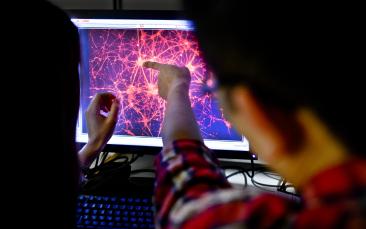
A repairable brain: cell reprogramming to halt neurodegenerative disease
What if damaged brain cells could be replaced? ERC grantee Malin Parmar has developed innovative genetic reprogramming techniques that can produce new brain cells from other types of cells in the body, opening up new therapeutic pathways to combat…What if damaged brain cells could be replaced? ERC grantee Malin Parmar has developed innovative genetic reprogramming techniques that can produce new brain cells from other types of…What if damaged brain cells could be replaced? ERC grantee Malin Parmar has developed innovative genetic reprogramming techniques that can produce…What if damaged brain cells could be replaced? ERC grantee Malin Parmar has developed innovative genetic reprogramming techniques that can produce new brain cells from other…What if damaged brain cells could be replaced? ERC grantee Malin Parmar has developed innovative genetic reprogramming… -
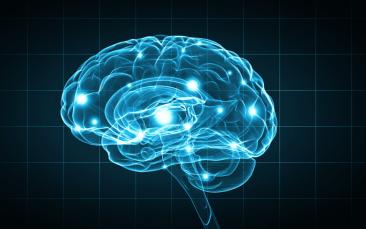
How did human brains get so large?
The human brain is a remarkable organ, but how did it evolve to give us such unprecedented cognitive abilities? ERC grantee Pierre Vanderhaeghen and his team from ULB, VIB-KU Leuven turned to the genome for answers: a specific set of genes, found…The human brain is a remarkable organ, but how did it evolve to give us such unprecedented cognitive abilities? ERC grantee Pierre Vanderhaeghen and his team from ULB, VIB-KU Leuven…The human brain is a remarkable organ, but how did it evolve to give us such unprecedented cognitive abilities? ERC grantee Pierre Vanderhaeghen and…The human brain is a remarkable organ, but how did it evolve to give us such unprecedented cognitive abilities? ERC grantee Pierre Vanderhaeghen and his team from ULB, VIB-KU…The human brain is a remarkable organ, but how did it evolve to give us such unprecedented cognitive abilities? ERC grantee… -
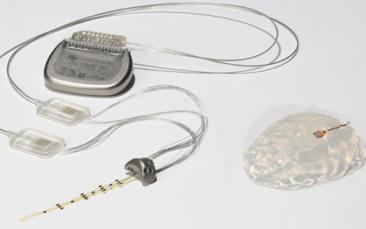
Could personalised neuroprosthetics make paralysed patients walk again?
Prof. Gregoire Courtine believes paralysed patients will be able to walk again.This belief has represented the focus of years of work aimed at regenerating the functions of the spinal cord after injury. Thanks to his ERC funding in both 2010 and…Prof. Gregoire Courtine believes paralysed patients will be able to walk again.This belief has represented the focus of years of work aimed at regenerating the functions of the spinal…Prof. Gregoire Courtine believes paralysed patients will be able to walk again.This belief has represented the focus of years of work aimed at…Prof. Gregoire Courtine believes paralysed patients will be able to walk again.This belief has represented the focus of years of work aimed at regenerating the functions of…Prof. Gregoire Courtine believes paralysed patients will be able to walk again.This belief has represented the focus of… -
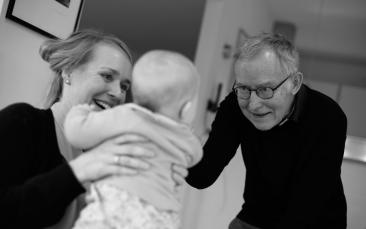
Together, we can achieve a lot
Ole Kamstrup, MD., MSc., is a pensioner and lives north of Copenhagen in Denmark. He has been diagnosed with Parkinson's disease ten years ago. Since 2013, Mr Kamstrup has been in contact with Professor Deniz Kirik, a neuroscientist at Lund…Ole Kamstrup, MD., MSc., is a pensioner and lives north of Copenhagen in Denmark. He has been diagnosed with Parkinson's disease ten years ago. Since 2013, Mr Kamstrup has been in…Ole Kamstrup, MD., MSc., is a pensioner and lives north of Copenhagen in Denmark. He has been diagnosed with Parkinson's disease ten years ago. Since…Ole Kamstrup, MD., MSc., is a pensioner and lives north of Copenhagen in Denmark. He has been diagnosed with Parkinson's disease ten years ago. Since 2013, Mr Kamstrup has…Ole Kamstrup, MD., MSc., is a pensioner and lives north of Copenhagen in Denmark. He has been diagnosed with Parkinson's… -

New understanding of how Alzheimer’s develops
By focusing on certain actions and reactions within the brain, an EU-funded project has advanced understanding of how Alzheimer’s Disease develops. This could potentially open the door to a new era of targeted treatments.By focusing on certain actions and reactions within the brain, an EU-funded project has advanced understanding of how Alzheimer’s Disease develops. This could potentially open the door…By focusing on certain actions and reactions within the brain, an EU-funded project has advanced understanding of how Alzheimer’s Disease develops…By focusing on certain actions and reactions within the brain, an EU-funded project has advanced understanding of how Alzheimer’s Disease develops. This could potentially…By focusing on certain actions and reactions within the brain, an EU-funded project has advanced understanding of how… -

The brain: a tuneable 'hardware'
A crucial discovery of how the brain functions has been made by EU-funded researchers. ERC Advanced Grant holder Prof. Oscar Marin and his team have shown that brain's 'hardware' - using the computing metaphor - is in fact tuneable and can adapt to…A crucial discovery of how the brain functions has been made by EU-funded researchers. ERC Advanced Grant holder Prof. Oscar Marin and his team have shown that brain's 'hardware' -…A crucial discovery of how the brain functions has been made by EU-funded researchers. ERC Advanced Grant holder Prof. Oscar Marin and his team have…A crucial discovery of how the brain functions has been made by EU-funded researchers. ERC Advanced Grant holder Prof. Oscar Marin and his team have shown that brain's …A crucial discovery of how the brain functions has been made by EU-funded researchers. ERC Advanced Grant holder Prof… -
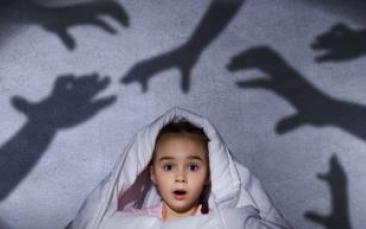
Animals "peer-pressured" into reacting to danger
ERC grantee Marta Moita and her team use cutting-edge experimental procedures to investigate how rats and flies learn to appropriately respond to danger from other individuals. The results of her study may teach us a lot about our own brains, and…ERC grantee Marta Moita and her team use cutting-edge experimental procedures to investigate how rats and flies learn to appropriately respond to danger from other individuals. The…ERC grantee Marta Moita and her team use cutting-edge experimental procedures to investigate how rats and flies learn to appropriately respond to…ERC grantee Marta Moita and her team use cutting-edge experimental procedures to investigate how rats and flies learn to appropriately respond to danger from other…ERC grantee Marta Moita and her team use cutting-edge experimental procedures to investigate how rats and flies learn to… -
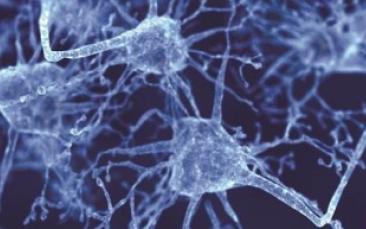
ERC grantee and regional government to set up gene therapy centre
ERC grantee Professor Deniz Kirik's spin-off company will join forces with Skåne Regional Council in southern Sweden to build a specialised hospital and a state-of-the-art gene therapy centre, the parties announced on 8 October. The new facilities…ERC grantee Professor Deniz Kirik's spin-off company will join forces with Skåne Regional Council in southern Sweden to build a specialised hospital and a state-of-the-art gene therapy…ERC grantee Professor Deniz Kirik's spin-off company will join forces with Skåne Regional Council in southern Sweden to build a specialised hospital…ERC grantee Professor Deniz Kirik's spin-off company will join forces with Skåne Regional Council in southern Sweden to build a specialised hospital and a state-of-the-art…ERC grantee Professor Deniz Kirik's spin-off company will join forces with Skåne Regional Council in southern Sweden to… -

If Darwin could have scuba dived...
If Darwin could have scuba dived, he would have enjoyed the East African lakes: Victoria, Malawi and Tanganyika. Here live the cichlids – a colourful fish which has evolved rapidly into thousands of species, emulating and surpassing Darwin's finches…If Darwin could have scuba dived, he would have enjoyed the East African lakes: Victoria, Malawi and Tanganyika. Here live the cichlids – a colourful fish which has evolved rapidly…If Darwin could have scuba dived, he would have enjoyed the East African lakes: Victoria, Malawi and Tanganyika. Here live the cichlids – a colourful…If Darwin could have scuba dived, he would have enjoyed the East African lakes: Victoria, Malawi and Tanganyika. Here live the cichlids – a colourful fish which has evolved…If Darwin could have scuba dived, he would have enjoyed the East African lakes: Victoria, Malawi and Tanganyika. Here live… -
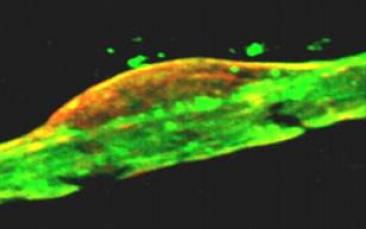
How is your brain powered?
The brain is one of the most energy-consuming organs. It represents only 2% of the weight of an adult but it uses 20% of the energy produced by the body. Efficient energy supply is crucial for the brain so that our memory, mobility and senses can…The brain is one of the most energy-consuming organs. It represents only 2% of the weight of an adult but it uses 20% of the energy produced by the body. Efficient energy supply is…The brain is one of the most energy-consuming organs. It represents only 2% of the weight of an adult but it uses 20% of the energy produced by the…The brain is one of the most energy-consuming organs. It represents only 2% of the weight of an adult but it uses 20% of the energy produced by the body. Efficient energy…The brain is one of the most energy-consuming organs. It represents only 2% of the weight of an adult but it uses 20% of the…
